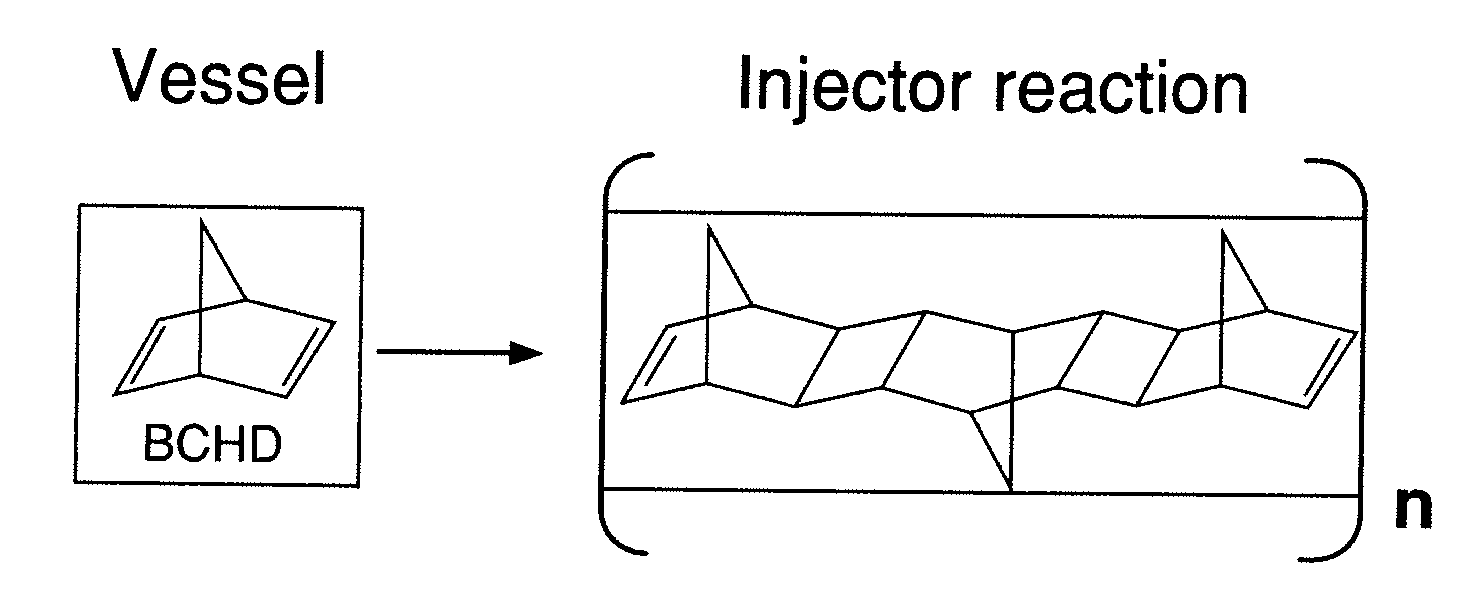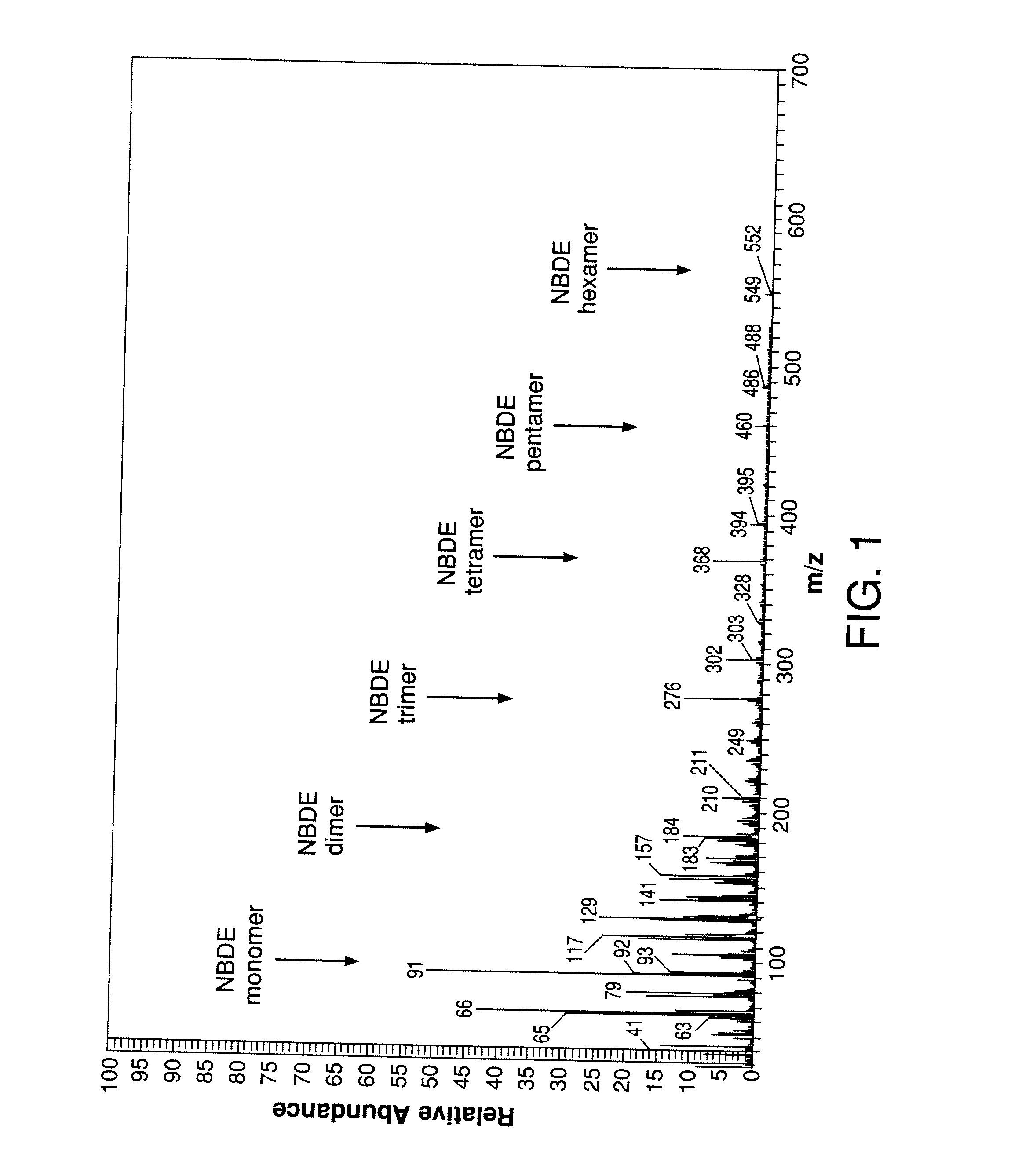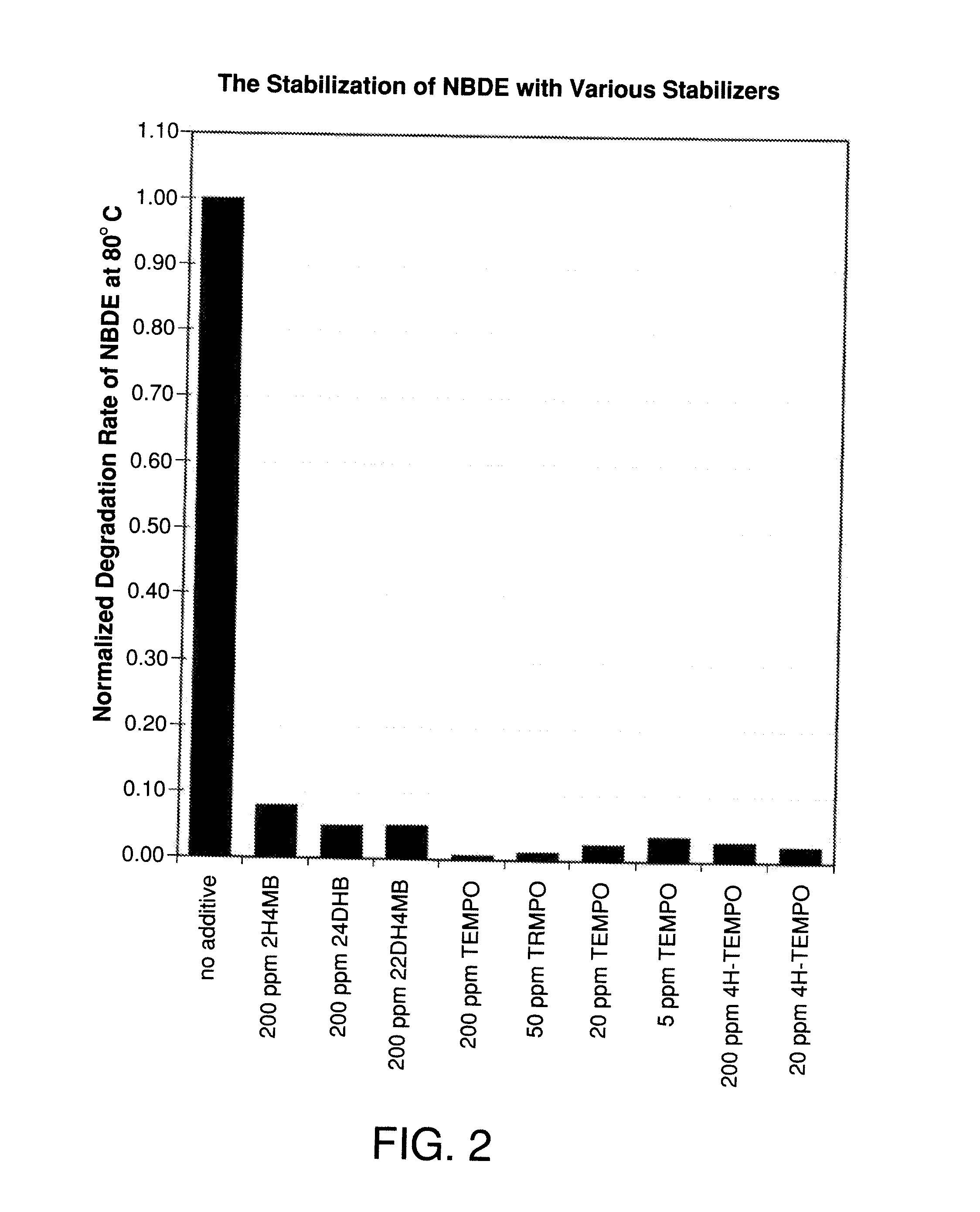Stabilizers for the Stabilization of Unsaturated Hydrocarbon-based Precursor
a technology of stabilizers and hydrocarbons, applied in the direction of other chemical processes, organic chemistry, chemistry apparatus and processes, etc., can solve the problems of precursor delivery problems, nbde and isoprene are thermally unstable with respect to oligomerization/polymerization, and many unsaturated hydrocarbons that are prone to polymerization will gradually degrade or polymeriz
- Summary
- Abstract
- Description
- Claims
- Application Information
AI Technical Summary
Benefits of technology
Problems solved by technology
Method used
Image
Examples
working examples
[0067]In order to more fully describe the present invention, the following examples are presented which are intended to be merely illustrative and not in any sense limitative of the invention.
[0068]NBDE degrades at a substantial rate at ambient temperature forming soluble oligomeric byproducts. The degradation may or may not result in the discoloration of the NBDE liquid. The extent of degradation is assessed by determining the concentration of oligomers in the NBDE liquid. However, gas chromatography, the most common chemical analysis method used for organic liquids, is not an effective method for quantifying the amount of oligomers in NBDE solution. The oligomers cannot be accurately quantified by GC because they are reactive and, as such, they are prone to further oligomerization. They are also generally non-volatile because of their high molecular weight causing them to elute from the GC column only after very long retention times or perhaps not at all.
[0069]A non-volatile resid...
example 1
Residue Evaluation of Recently Distilled NBDE
[0071]A sample of NBDE was flash distilled to remove non-volatile impurities using a rotary-evaporator. The distilled material was analyzed by GC to have a nominal purity of 99.4%. The tare weight of an empty, clean 1.2 liter quartz bubbler was recorded after evacuation. The bubbler was previously equipped with gas inlet and outlet ports, each fitted with a Teflon valve. The bubbler inlet port had a dip-tube that extends to within ⅛″ of the base of the container. About 600 g of NBDE was added to the quartz bubbler within a nitrogen-containing dry box. The bubbler was re-weighed to determine the weight of the NBDE. A cylinder of research grade He was connected to the bubbler inlet line. The bubbler temperature was increased to 35° C. to increase the vapor pressure of the NBDE. He was purged through the bubbler at a flow rate of 3.0 SLPM (standard liters per minute) for 4 hours to evaporate the NBDE. At this time the bubbler temperature was...
example 2
Evaluation of the Degradation Rate of NBDE Stored at Ambient Temperature
[0072]A 13.0 liter sample of NBDE was purified by atmospheric distillation. The distilled sample was analyzed by GC to have a nominal purity of 99.4%. The sample was stored in a chemical cabinet indoors for a total of 287 days. At this time approximately 200 g of NBDE was loaded into a pre-cleaned, pre-tarred bubbler as described in Example 1. The bubbler was subjected to 3.0 SLPM at 35° C. for 4.0 hours to evaporate the NBDE. The bubbler temperature was raised to 80° C. and the bubbler was evacuated for 2.0 hours to achieve a stable weight. The final weight of the bubbler was recorded after the evacuation step to determine the weight of the non-volatile residue. This experiment was done in duplicate. The weights of the non-volatile residue for the two runs were 2.29 g and 2.24 g, corresponding to an average residue of 1.12 wt. %. This is equivalent to a degradation rate of 1.63 ppm per hour based on the weight ...
PUM
| Property | Measurement | Unit |
|---|---|---|
| Fraction | aaaaa | aaaaa |
| Fraction | aaaaa | aaaaa |
| Fraction | aaaaa | aaaaa |
Abstract
Description
Claims
Application Information
 Login to View More
Login to View More - R&D
- Intellectual Property
- Life Sciences
- Materials
- Tech Scout
- Unparalleled Data Quality
- Higher Quality Content
- 60% Fewer Hallucinations
Browse by: Latest US Patents, China's latest patents, Technical Efficacy Thesaurus, Application Domain, Technology Topic, Popular Technical Reports.
© 2025 PatSnap. All rights reserved.Legal|Privacy policy|Modern Slavery Act Transparency Statement|Sitemap|About US| Contact US: help@patsnap.com



